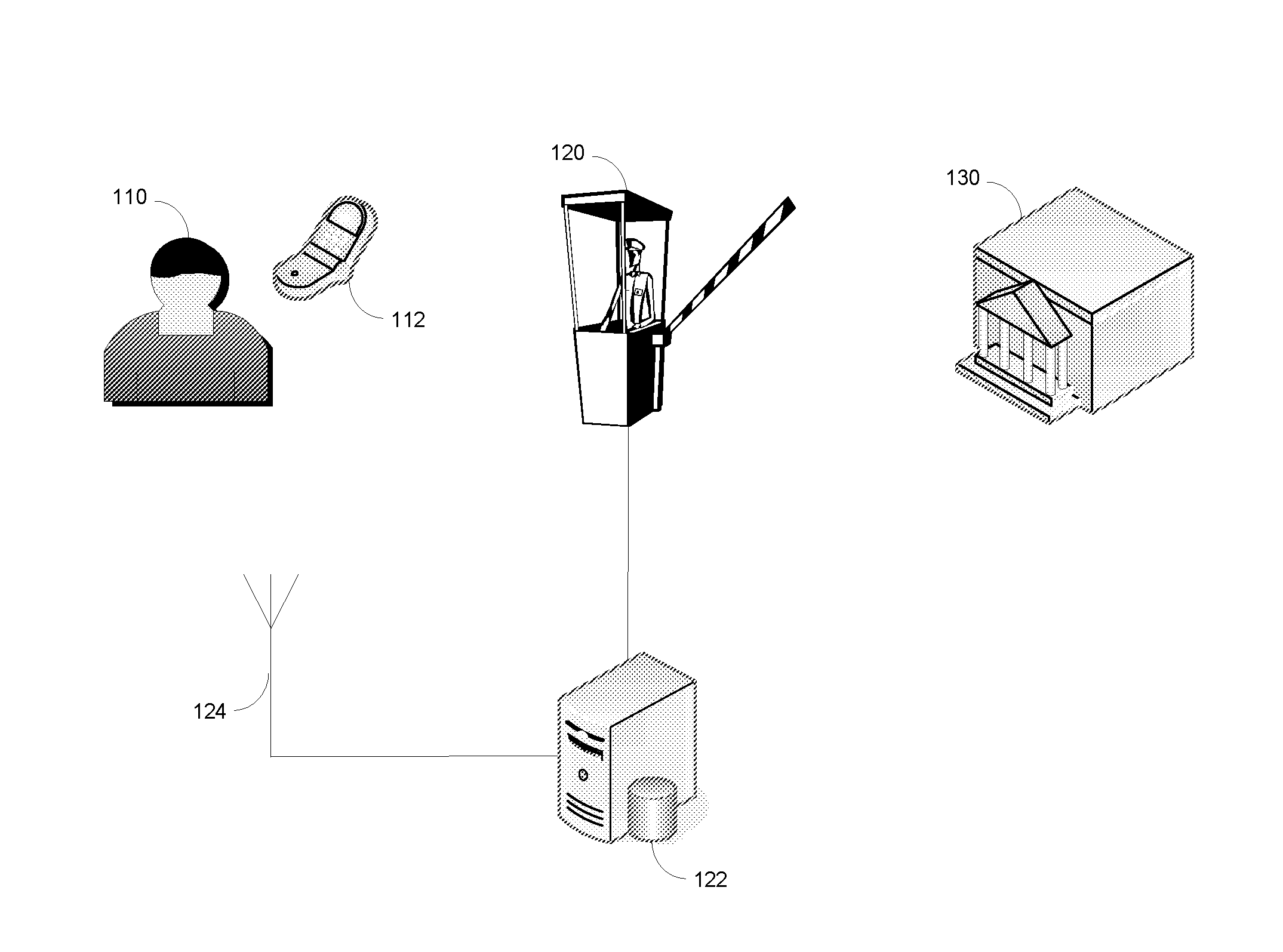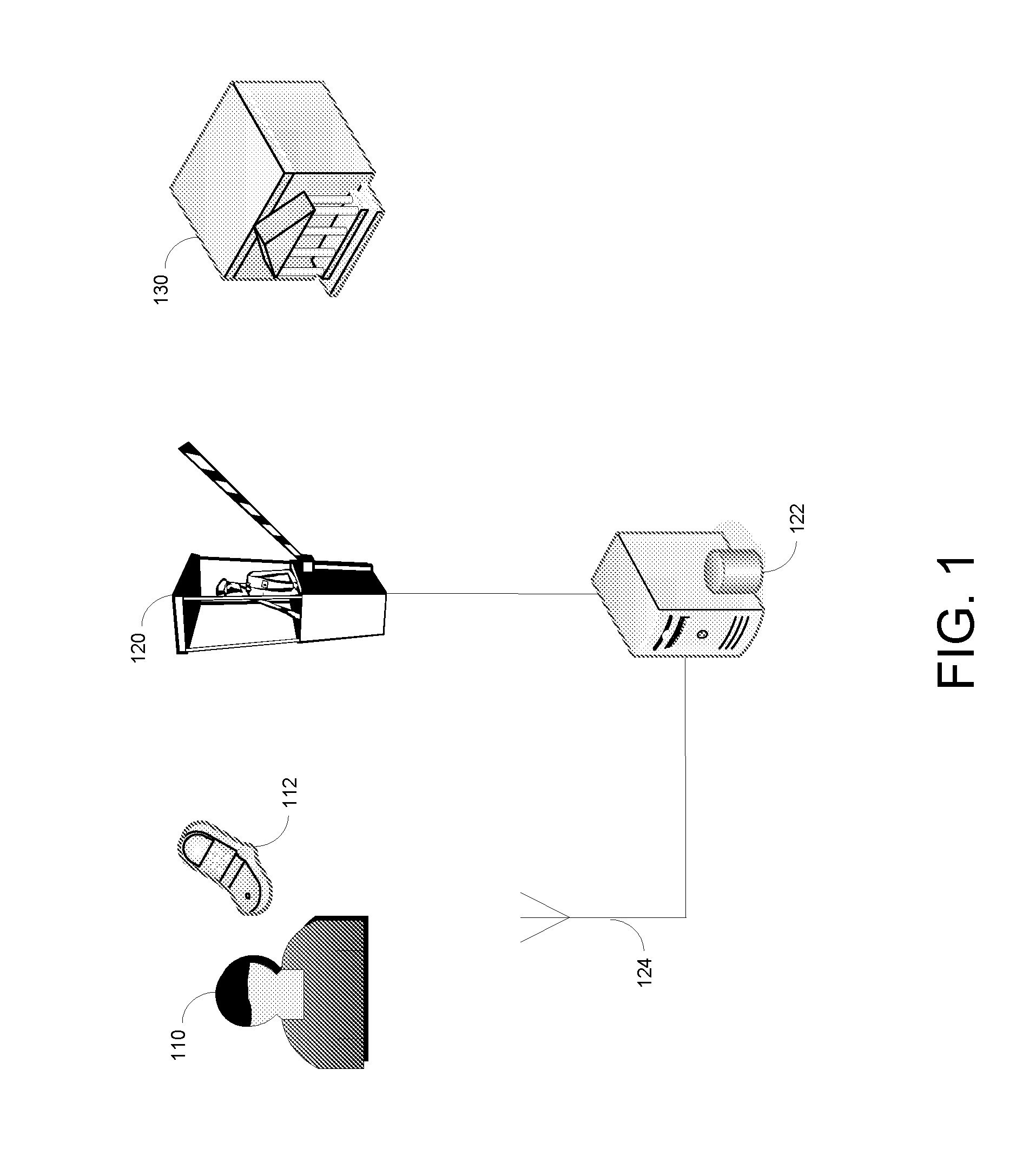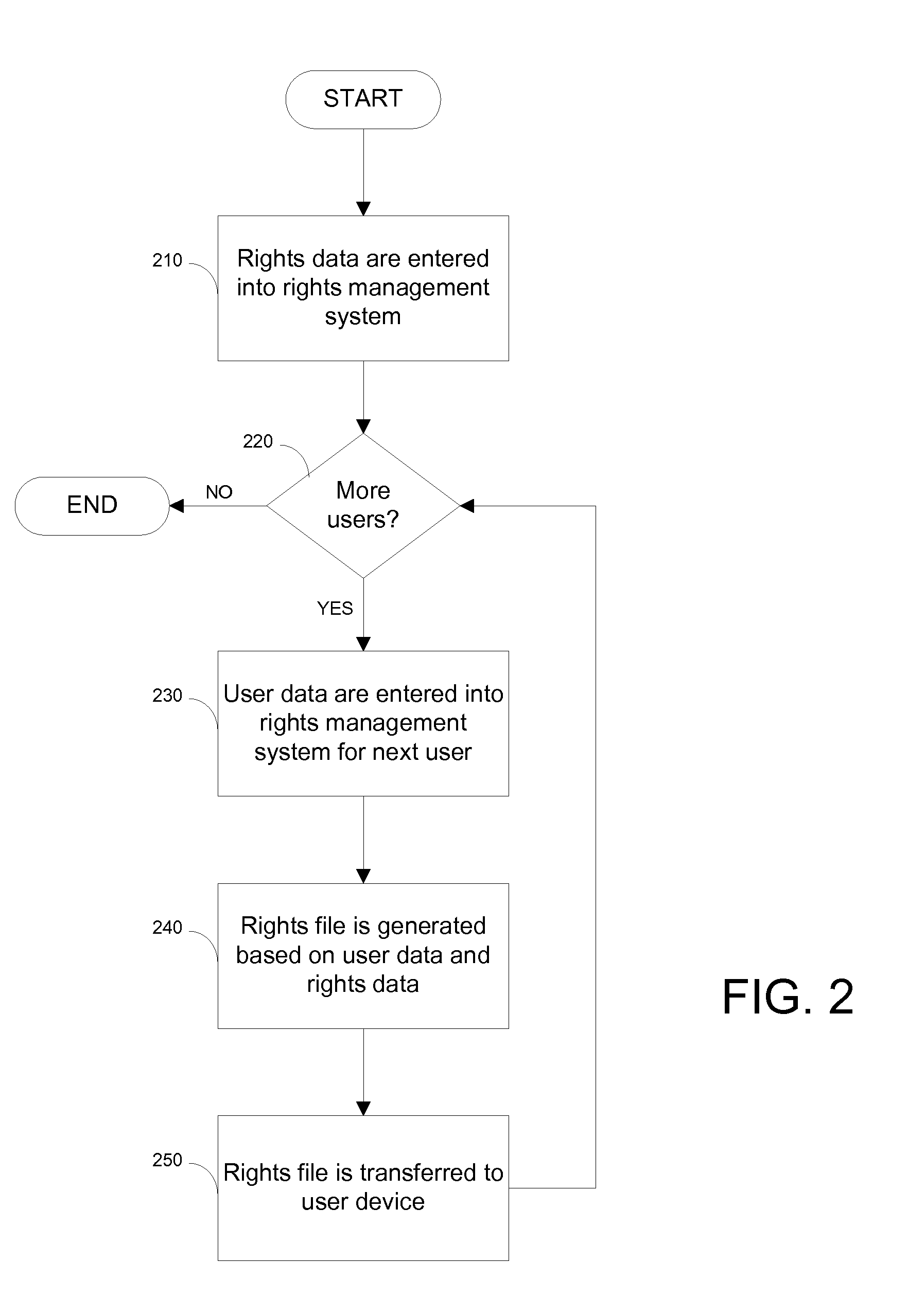Wireless Encrypted Control of Physical Access Systems
a physical access system and encryption technology, applied in the field of physical access systems, can solve the problems of slow access to the restricted area of authorized individuals, unsatisfactory high-volume settings, and unauthorized access into the restricted area, and achieve the effect of avoiding security issues
- Summary
- Abstract
- Description
- Claims
- Application Information
AI Technical Summary
Benefits of technology
Problems solved by technology
Method used
Image
Examples
Embodiment Construction
[0007]The foregoing problems may be solved through the use of an electronic device that requires self-authentication, such as a smartphone, rather than a prox card to gain access to restricted areas. This requirement alleviates the security issues that arise when prox cards are lost or stolen, as a stolen phone is login-protected, and may be remotely deactivated. The illustrated embodiments also require that the electronic device communicate a rights file to the ACS. The rights file may be generated under secure conditions and digitally signed by a digital certificate that is trusted by the system. This requirement solves the problem of otherwise trusted employees who forge credentials above their assigned access levels. In some embodiments, the electronic device communicates the rights file to the physical barrier system directly, via NFC, while in other embodiments the rights file is sent to a ACS headend from a medium-range or long-range distance using a wireless communications n...
PUM
 Login to View More
Login to View More Abstract
Description
Claims
Application Information
 Login to View More
Login to View More - R&D
- Intellectual Property
- Life Sciences
- Materials
- Tech Scout
- Unparalleled Data Quality
- Higher Quality Content
- 60% Fewer Hallucinations
Browse by: Latest US Patents, China's latest patents, Technical Efficacy Thesaurus, Application Domain, Technology Topic, Popular Technical Reports.
© 2025 PatSnap. All rights reserved.Legal|Privacy policy|Modern Slavery Act Transparency Statement|Sitemap|About US| Contact US: help@patsnap.com



